Hole in the Clouds
Oct 28, 2009
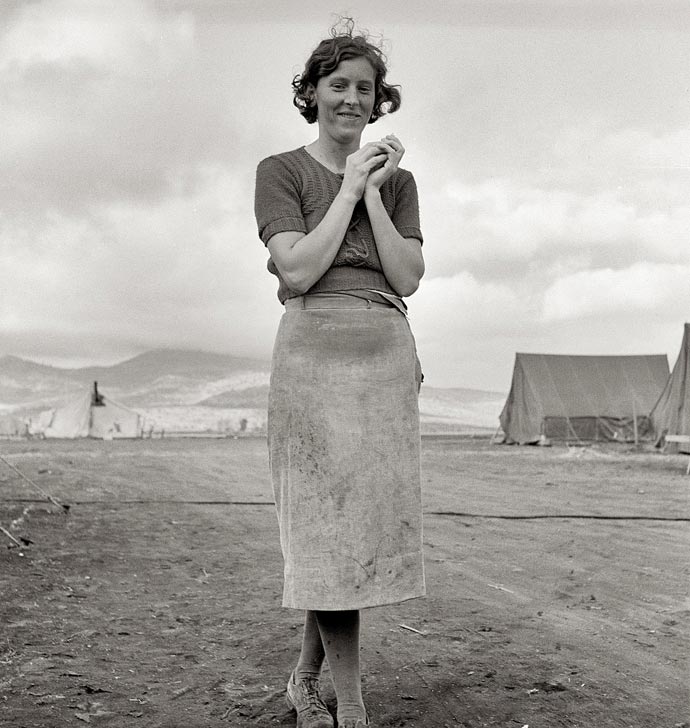
Dorothea Lange photographed this woman in a migrant farmworker camp in Klamath County, Oregon, in 1939. According to Lange's notes, the woman was a young mother, originally from El Paso, Texas, who had just finished her washing.
vintage
migrant farmworker
Oregon
(Image credit: Dorothea Lange
Farm Security Administration)
Dec 8, 2010
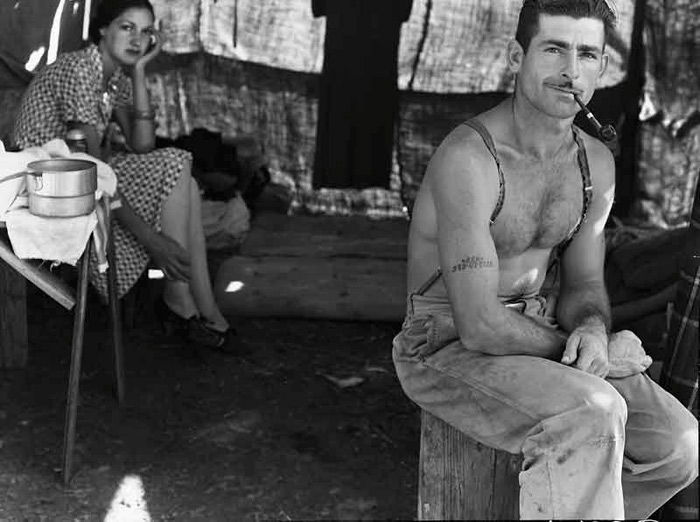
In August 1939, this unemployed lumberjack and his wife showed up in the bean fields of eastern Oregon, hoping for a few weeks' work picking beans. Even though New Deal photographer Dorothea Lange was not expected--and in fact was not permitted--to note the names of the people she portrayed, we actually know a fair amount about this couple, thanks to the tattoo on the man's right arm. It's his Social Security number.
He is Thomas Urs Cave, 535-07-5248, and he must have been among the first Americans covered by Social Security, which started up for many workers--including lumberjacks but not farmworkers--in 1937. Tattooing Social Security numbers was not uncommon among people who may have feared that paperwork would disappear, or that they themselves might wind up in a ditch without identification. Mr. Cave's tattoo is a bit unusual, however, because it's right side up; usually, Social Security numbers were tattooed upside down, for easy reading by their owners.
He was born in July 1912, making him 31 when this picture was taken. He must have lost his logging job sometime after January 1937, when Social Security started up, so he was fairly new to the life of migrant farm labor. Three years after picking beans in eastern Oregon, he was drafted into the army, where he served till early 1946. He died in 1980 in Portland, Oregon, at the age of 68.
His army enlistment records identify him as "divorced," but his death records list a wife named Annie. The woman shown here may be the first wife; she might also be Annie, a girlfriend in the bean field days but eventually a second wife.
Thomas Urs Cave did eventually collect on his Social Security.
migrant farmworker
Oregon
Social Security
New Deal
Depression
(Image credit: Dorothea Lange, via Shorpy)
Dec 21, 2010
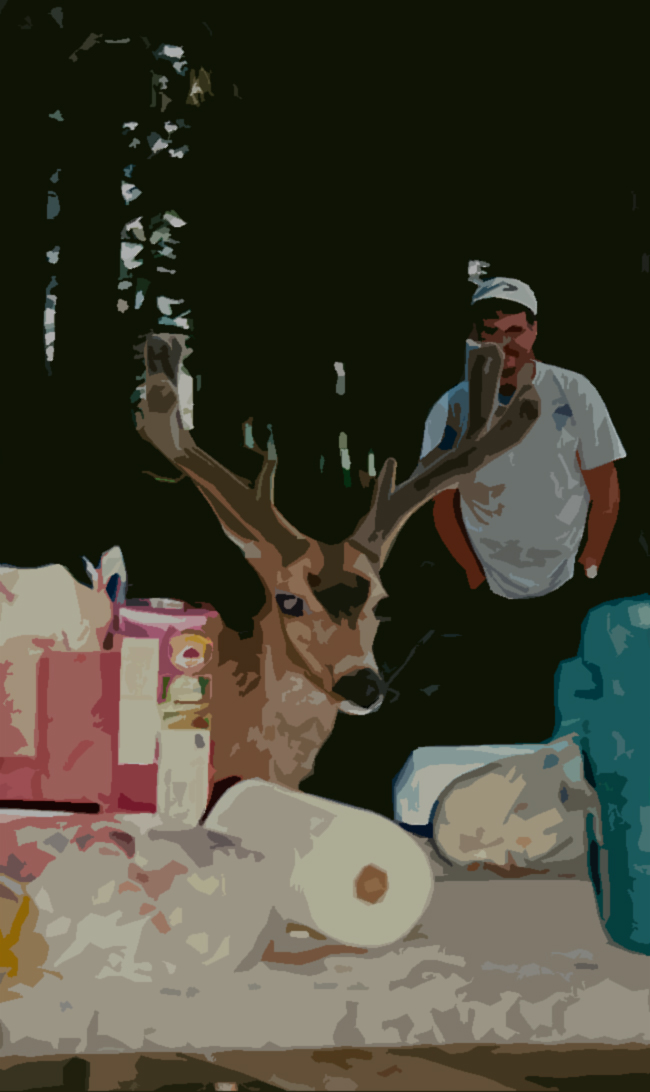
His nose isn't red, and he's not really a reindeer--I understand that. But that's not the problem. I have met this deer, this near-reindeer, and he is no Rudolph; in fact, he's probably one of those "other reindeer" who mocked poor Rudolph, who used to laugh and call him names.
This deer bully--an ordinary mule deer--spent the summer of 1997 in the campground of northeastern Oregon's Wallowa Lake State Park, stealing food from off the picnic tables. He didn't wait for people to leave a table unattended; he just bullied his way in to where a family was setting up for dinner, shoved the family aside, and stole their dinner.
He got a loaf of bread from us before I grabbed a pint of ketchup and chased him away, yelling and swinging my ketchup, hoping that the bottle looked like a weapon to a deer. I'm sure I looked like an idiot to the campers, and I knew even then that it's not smart to act so aggressively around unusually aggressive wildlife. But I remember the thrill of playing the hero, running him off into the woods, protecting my family from the beast.
Something else I knew even then: this animal's bad behavior had been caused by humans and would certainly shorten its life span.
I don't know the details of what happened next. In fact, for all I know, this picture might record an unfortunate deer's very last supper.
Oregon
reindeer
mule deer
Wallowa Lake State Park
May 8, 2014
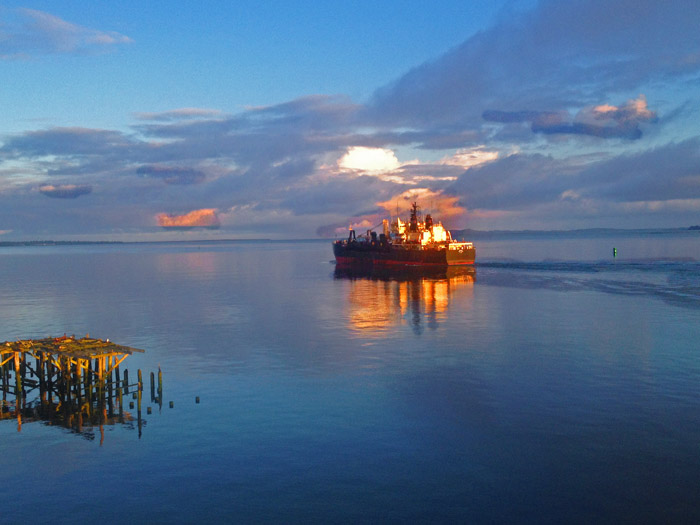 On November 15, 1805, Lewis and Clark first saw the Pacific Ocean here, at the mouth of the Columbia River. It was raining. The expedition hunkered down across from a headland that English sailors had already named Cape Disappointment; it rained on them that day and the next day and the day after that, and all but twelve of the succeeding days for five months straight.
On November 15, 1805, Lewis and Clark first saw the Pacific Ocean here, at the mouth of the Columbia River. It was raining. The expedition hunkered down across from a headland that English sailors had already named Cape Disappointment; it rained on them that day and the next day and the day after that, and all but twelve of the succeeding days for five months straight.
In May, however, as this photo proves, disappointment is no part of the scene.
We head westward this morning for another of Lewis and Clark's campsites: Missoula, Montana, which they called Traveller's Rest.
These here Good Mornings are unlikely until late in the month.
sunset
Oregon
ship
Pacific Ocean
Columbia River
(Image credit: Kathy Bellenger)
Jul 7, 2014
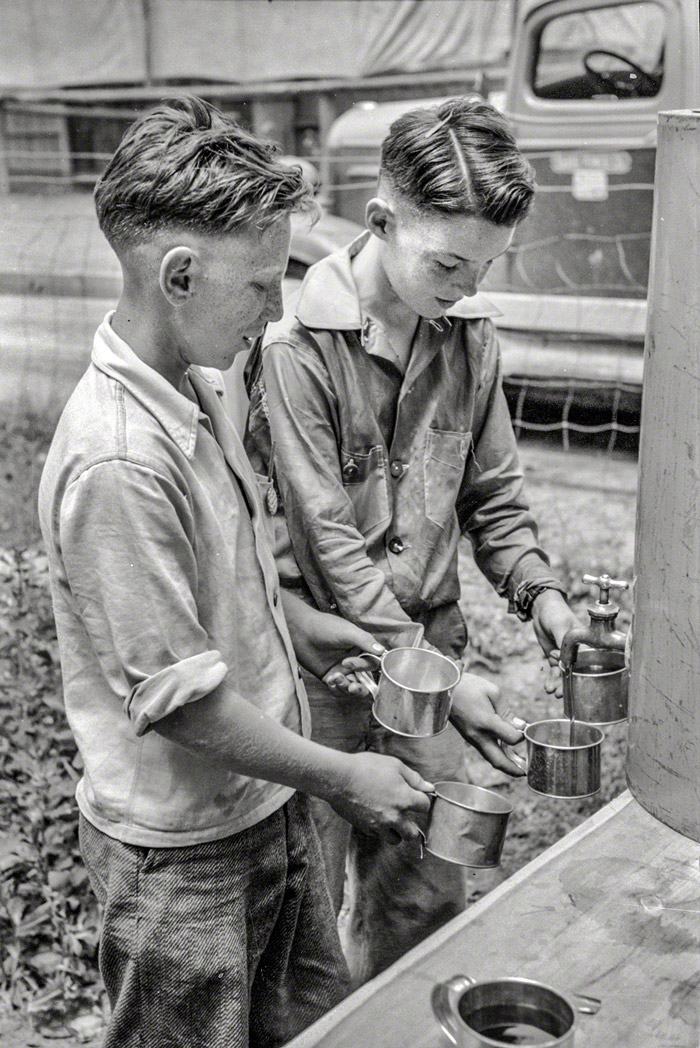 There was free coffee for all at the Fourth of July picnic in Vale, Oregon, in 1941. The people of Vale were mostly newcomers to eastern Oregon, lured there in the 1930s by the Vale-Owhyee irrigation project. Most of the new residents were farm people from the Dust Bowl region, and over the span of just a few years they changed the culture of what had previously been a ranching community.
There was free coffee for all at the Fourth of July picnic in Vale, Oregon, in 1941. The people of Vale were mostly newcomers to eastern Oregon, lured there in the 1930s by the Vale-Owhyee irrigation project. Most of the new residents were farm people from the Dust Bowl region, and over the span of just a few years they changed the culture of what had previously been a ranching community.
In 1941 for the first time the Vale Fourth of July festivities did not include a rodeo. Instead, there was a parade, a baseball game, a tug of war, a greased pig race, a motorcycle show, and, of course, fireworks. It was quite a full day of activities, and even the free coffee was not enough to keep everybody awake.
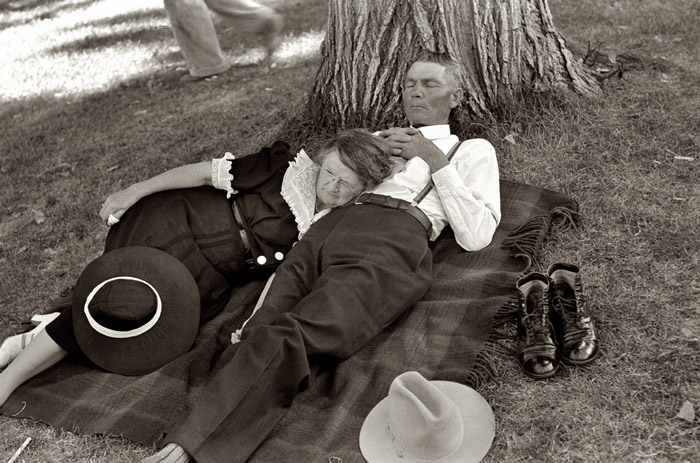
children
Oregon
coffee
Fourth of July
picnic
Vale
napping
(Image credits: Russell Lee for the Farm Security Administration
Dec 14, 2014
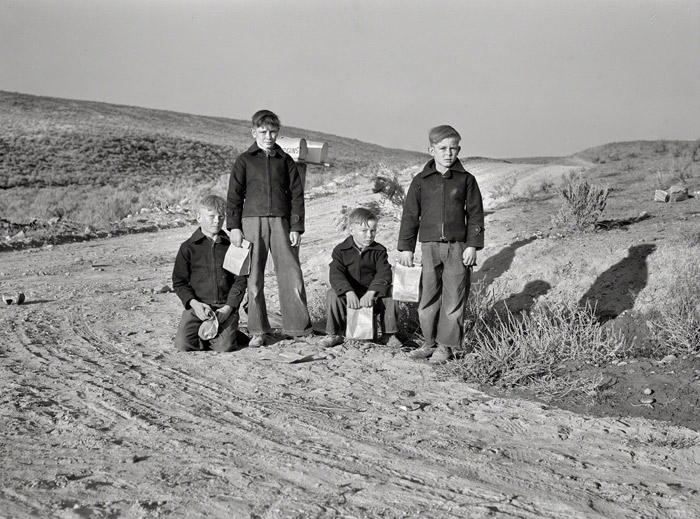 "Boys from Dead Ox Flat waiting for the school bus in the morning. Malheur County, Oregon."
"Boys from Dead Ox Flat waiting for the school bus in the morning. Malheur County, Oregon."
Dorothea Lange took this picture in October 1939 for the Resettlement Administration. During the mid-1930s, the desert country of eastern Oregon and southwestern Idaho attracted thousands of Dust Bowl refugees seeking construction work on the Owhyee dam and irrigation project; as the project came on line between 1935 and 1939, thousands more refugees sought agricultural work on the newly irrigated cropland.
The name on the mailbox behind the boys is revealed in another of Lange's photos of the same scene: H.E. Hudgins. According to the 1940 census, Herbert and Jessie Hudgins lived thereabouts--but with only two children, an eleven-year-old girl and a six-year-old boy. Herbert Hudgins worked as a ditch rider, assigned to travel the length of the new canals and laterals, cleaning out debris and opening and closing the check boards that control the flow of water to different growers' acreage.
The boys look to be wearing new clothes and fresh haircuts, perhaps because the photo was taken on the first day of a new school year. The picture is dated from the month of October, but this was a time and place where school would not begin until after the year's harvest was in.
landscape
children
streetscape
Oregon
boys
H.E. Hudgins
lunchbags
Malheur County
(Image credit: Dorothea Lange via Shorpy)
Jan 6, 2017
 These four words were scratched into the sand at one end of the beach in Ecola State Park, near Cannon Beach, Oregon. The love note was inscribed at the other end of the beach.
These four words were scratched into the sand at one end of the beach in Ecola State Park, near Cannon Beach, Oregon. The love note was inscribed at the other end of the beach.
But they go together, right? Maybe Summer Liver loves Sky Melodee? That's probably not right, but somehow these two messages have got to fit together?

beach
Oregon
graffiti
sand
Ecola State Park
Cannon Beach
(Image credit: Little Fuji)







 These four words were scratched into the sand at one end of the beach in Ecola State Park, near Cannon Beach, Oregon. The love note was inscribed at the other end of the beach.
These four words were scratched into the sand at one end of the beach in Ecola State Park, near Cannon Beach, Oregon. The love note was inscribed at the other end of the beach.